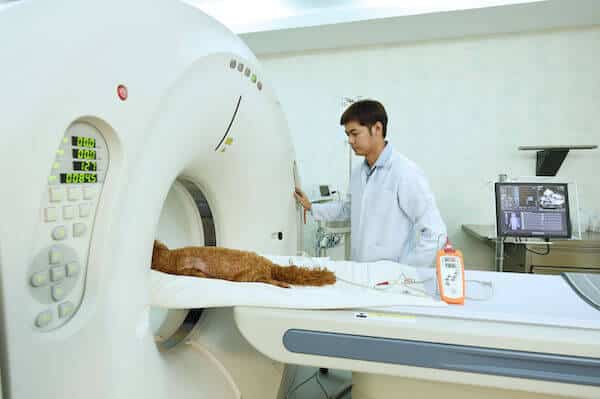july, 2024

Course Details
Week 1 Radiation Physics and Safety Learning objectives After completion of this week, participants should be able to: Understand the properties of x-rays Explain how an x-ray tube
Course Details
Week 1
Radiation Physics and Safety
Learning objectives
After completion of this week, participants should be able to:
Understand the properties of x-rays
Explain how an x-ray tube works
Explain how digital x-ray systems work
Explain the risks of working with radiation
Explain the principles of radiation protection and how this is implemented in veterinary practice
Week 2
Radiographic Anatomy and Physiology in Small Animal Patients
Learning objectives
After completion of this week, participants should be able to:
Understand the normal radiographic anatomy of the thorax
Understand the normal radiographic anatomy of the abdomen
Understand the normal radiographic anatomy of the spine
Understand the normal radiographic anatomy of the thoracic limb
Understand the normal radiographic anatomy of the pelvis and pelvic limbs
Week 3
Radiographic Techniques (Positioning and Contrast Studies)
Learning objectives
After completion of this week, participants should be able to:
Understand and implement the optimum positioning for thoracic radiographs
Understand and implement the optimum positioning for abdominal radiographs
Understand and implement the optimum positioning for spinal radiographs
Understand and implement the optimum positioning for pelvic
Understand and implement the optimum positioning for thoracic limb radiographs
Understand and implement the optimum positioning for pelvic limb radiographs
Explain specialised orthopaedic views (TTA / TPLO / stressed / flexed / extended)
Understand contrast media and its usage
Describe contrast and dynamic studies (IVU / retrograde urethrocystogram/angiography)
Week 4
MRI and CT – Physics and Safety
Learning objectives
After completion of this week, participants should be able to:
Describe the basic principles of how CT works
Describe the basic principles of how MRI works
Explain safety concerns when working with CT
Explain safety concerns when working with MRI
Compare differences between CT and MRI
Week 5
MRI Techniques and Acquisition
Learning objectives
After completion of this week, participants should be able to:
Understand how to position small animal patients for spinal imaging
Understand how to position small animal patients for brain imaging
Explain which sequences are commonly utilised in small animal imaging
Understand commonly seen MRI artefacts
Week 6
CT Techniques and Acquisition
Learning objectives
After completion of this week, participants should be able to:
Understand how to position small animal patients for commonly performed CT studies (Spine / Thorax / Abdomen / Elbow)
Explain which reconstruction algorithms can be utilised and when
Understand commonly seen CT artefacts
This course will be fully tutored by Ash Moors and will consist of 15 hours of CPD given in various formats, including tutorials, tasks, case studies, forum discussions and quizzes. This course is tutored for 6 weeks, followed by a two week extension of untutored ‘catch up’ time, before the course officially ends.
All delegates will then have unlimited lifetime access to the learning material for future reference
Time
July 15 (Monday) - August 23 (Friday)
Location
Online
Speaker
Ash MoorsFdSc, GradDipVN, PGCertVedEd, FHEA, RVN VETERINARY RADIOGRAPHER ROYAL VETERINARY COLLEGE



0 Comments